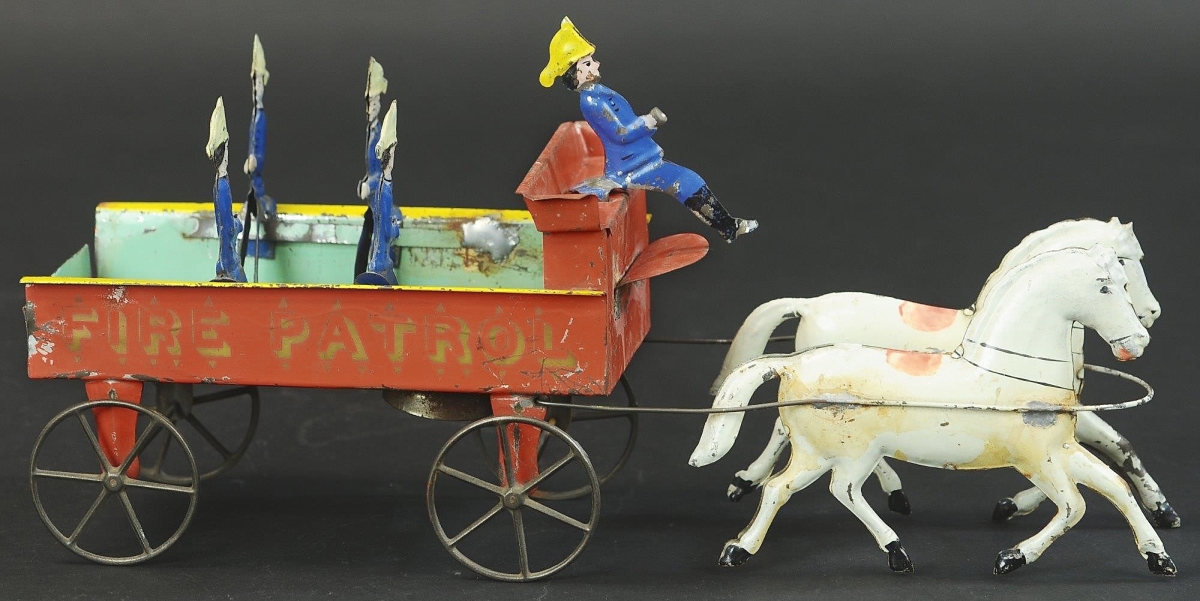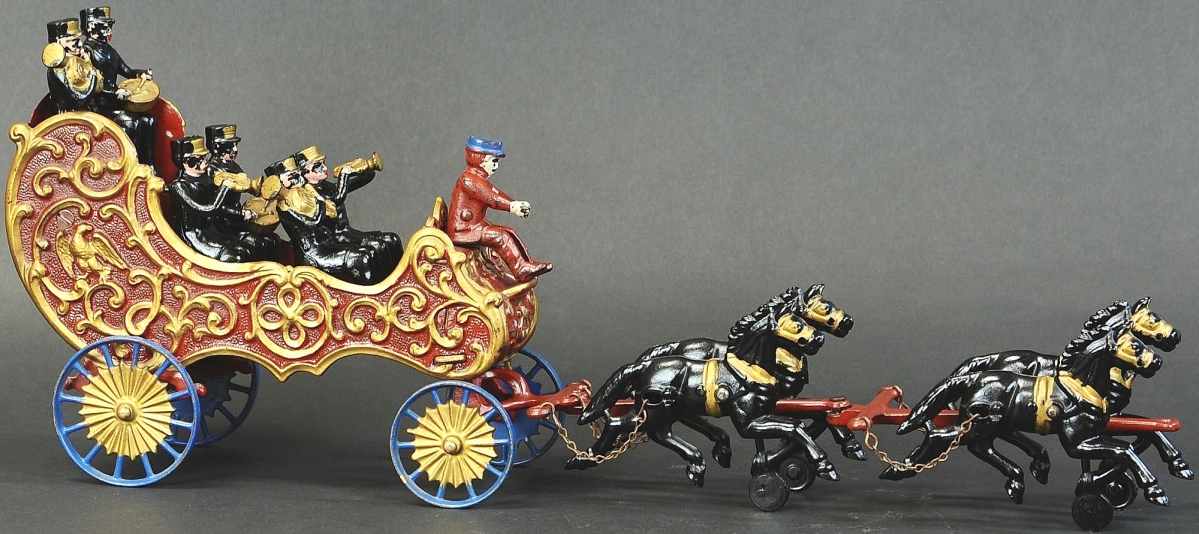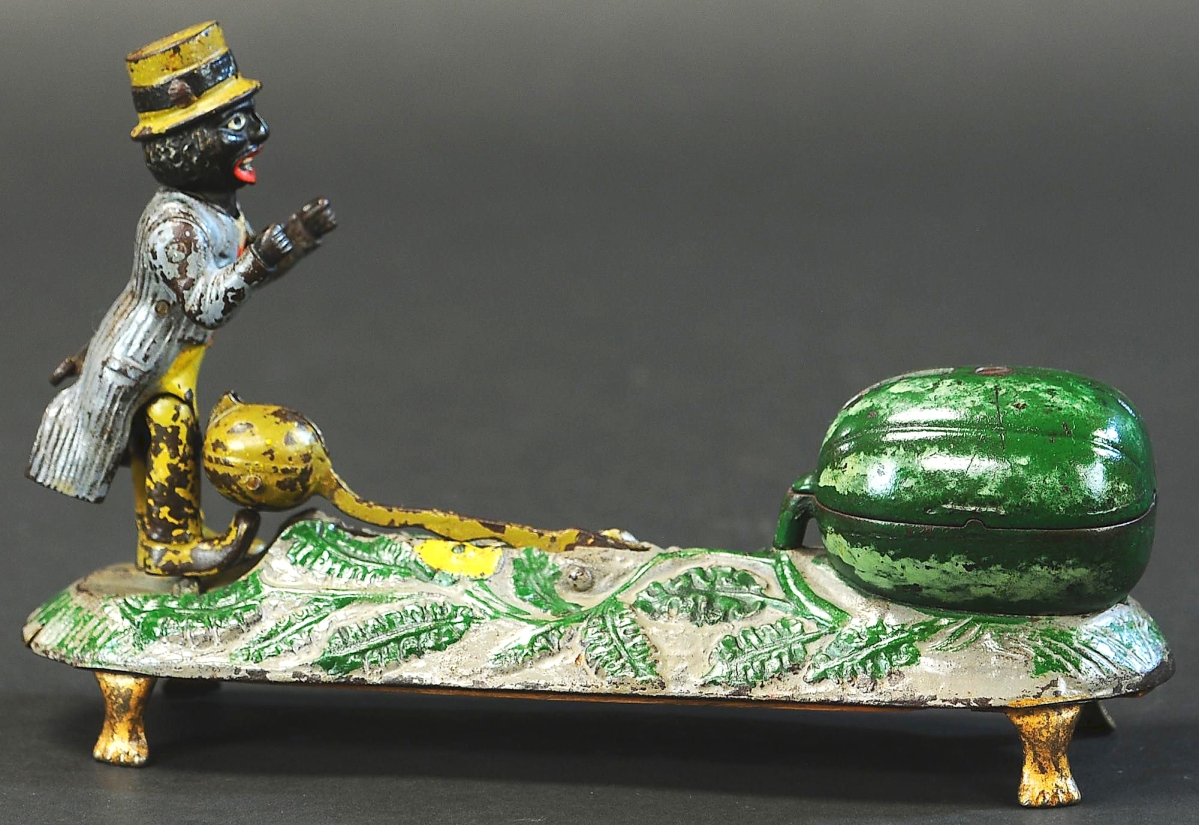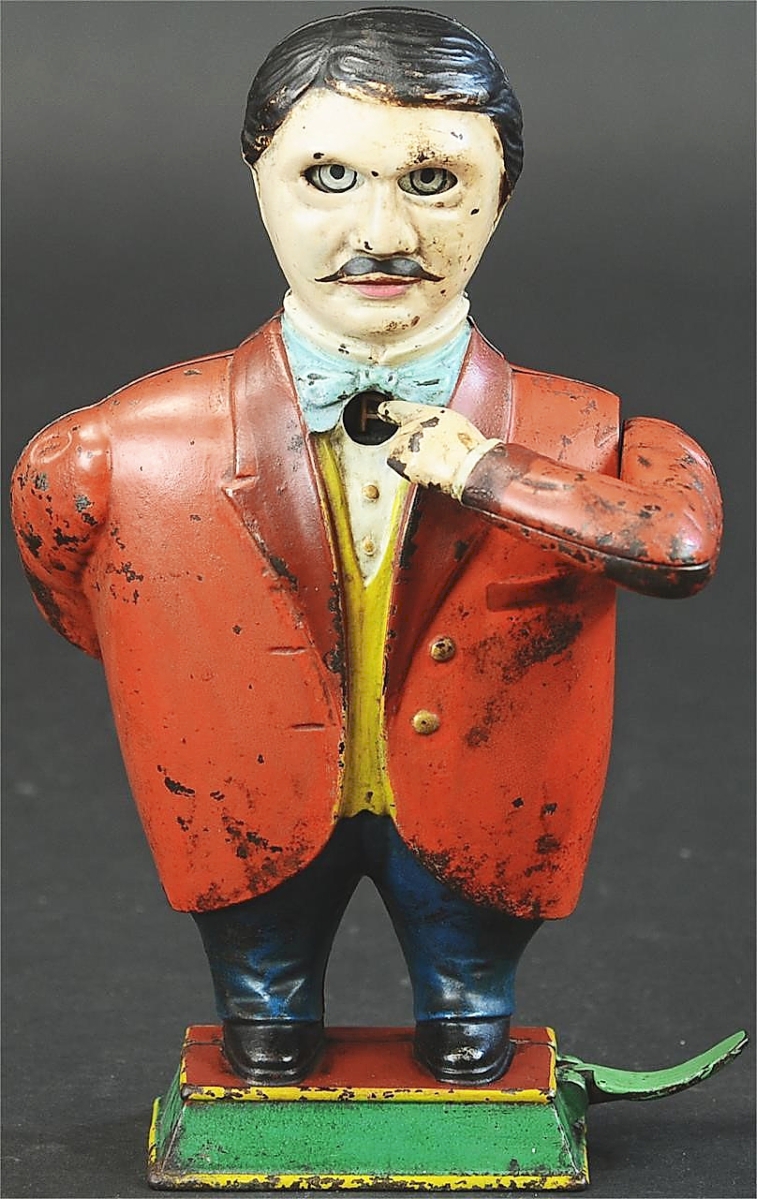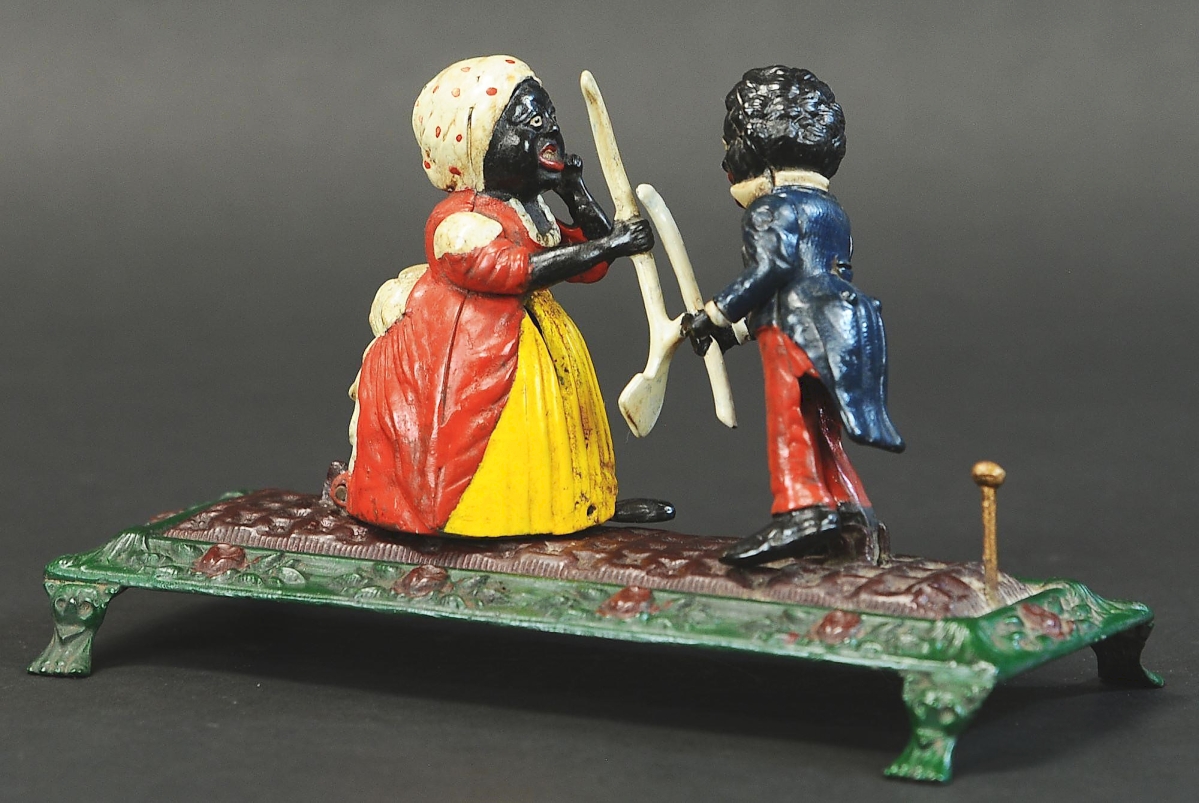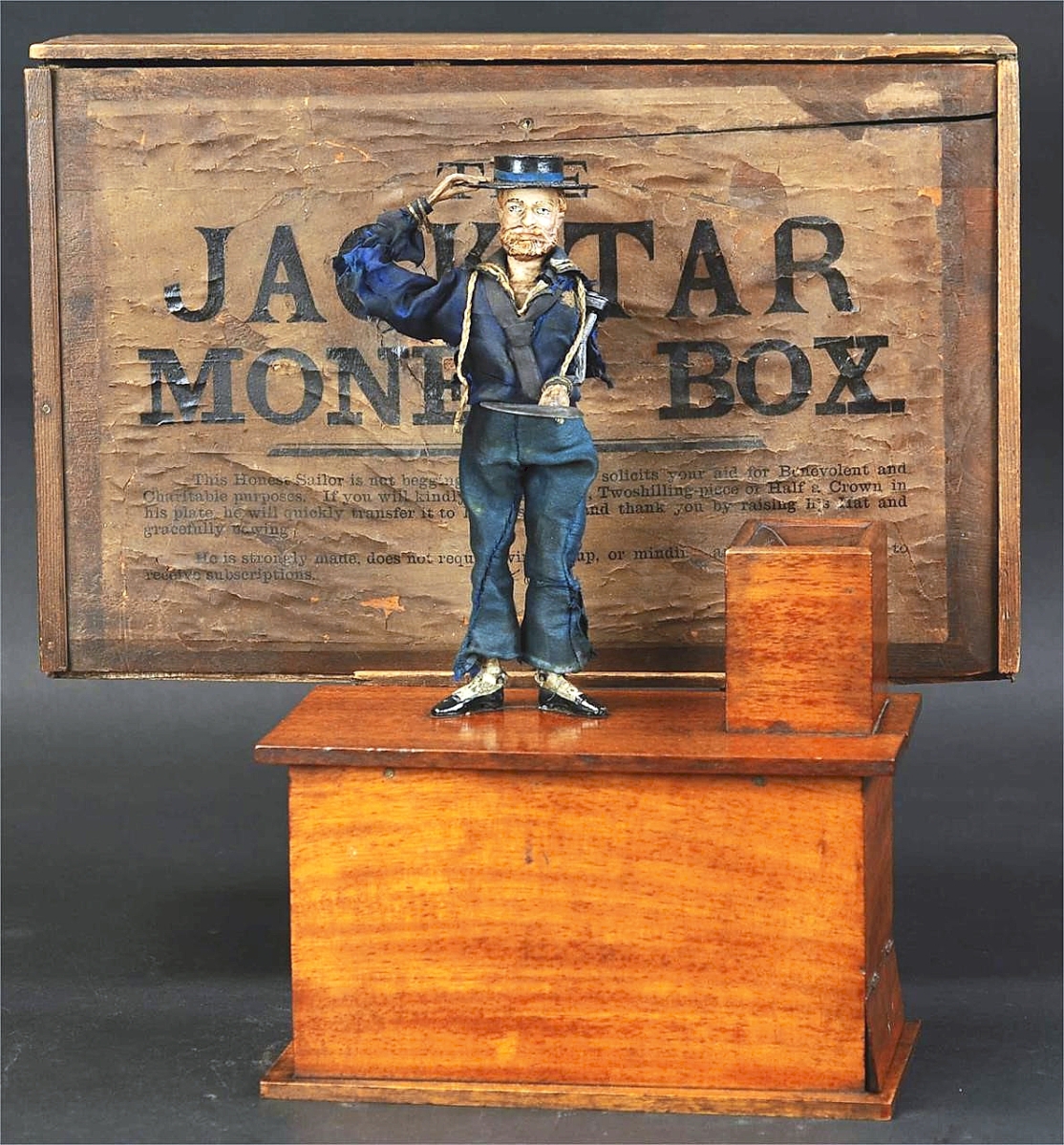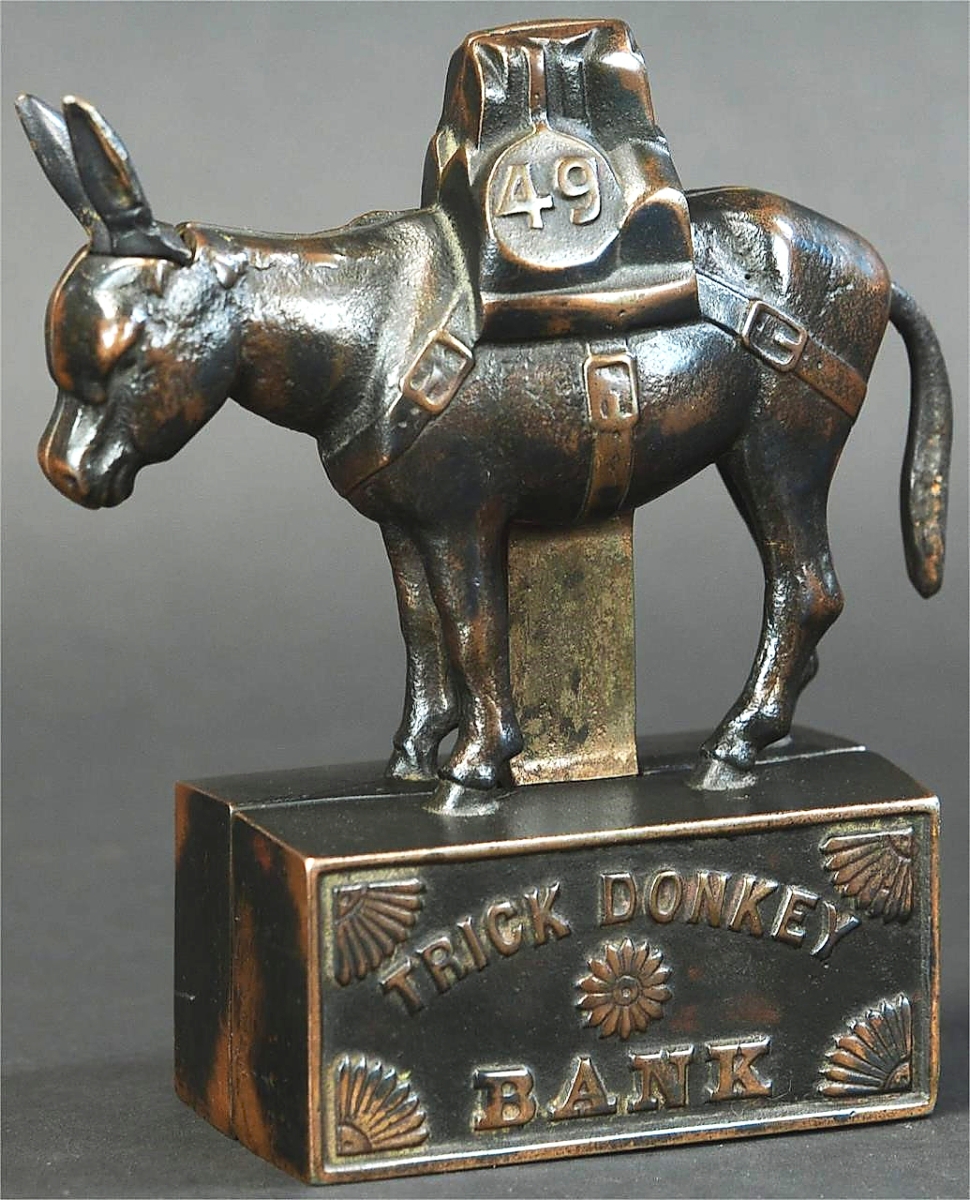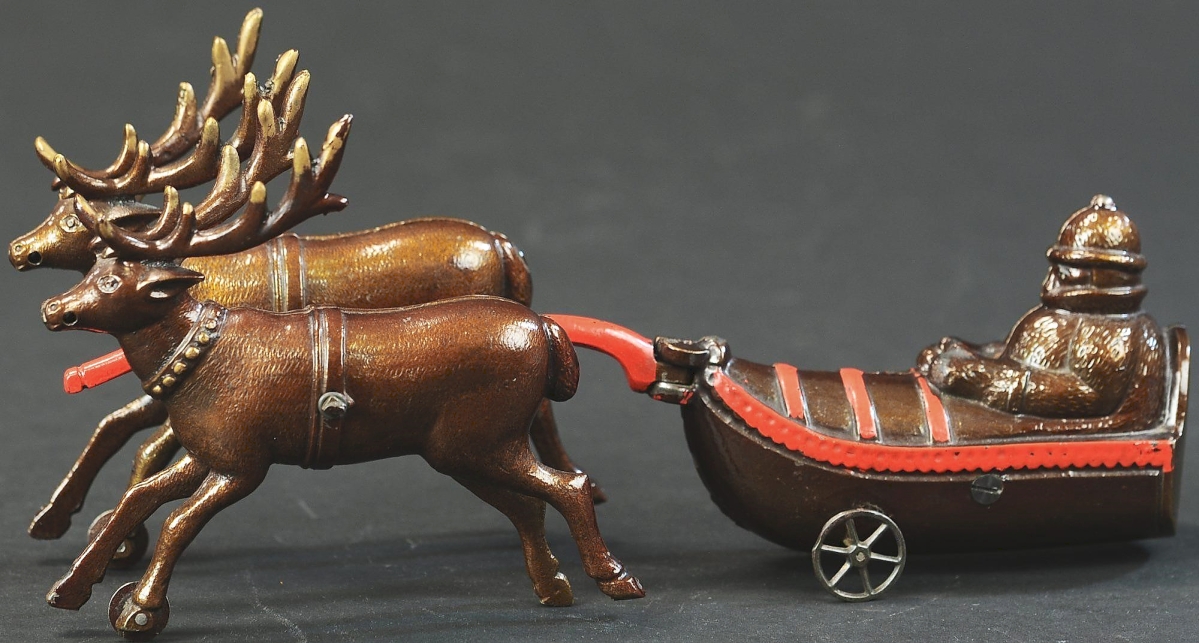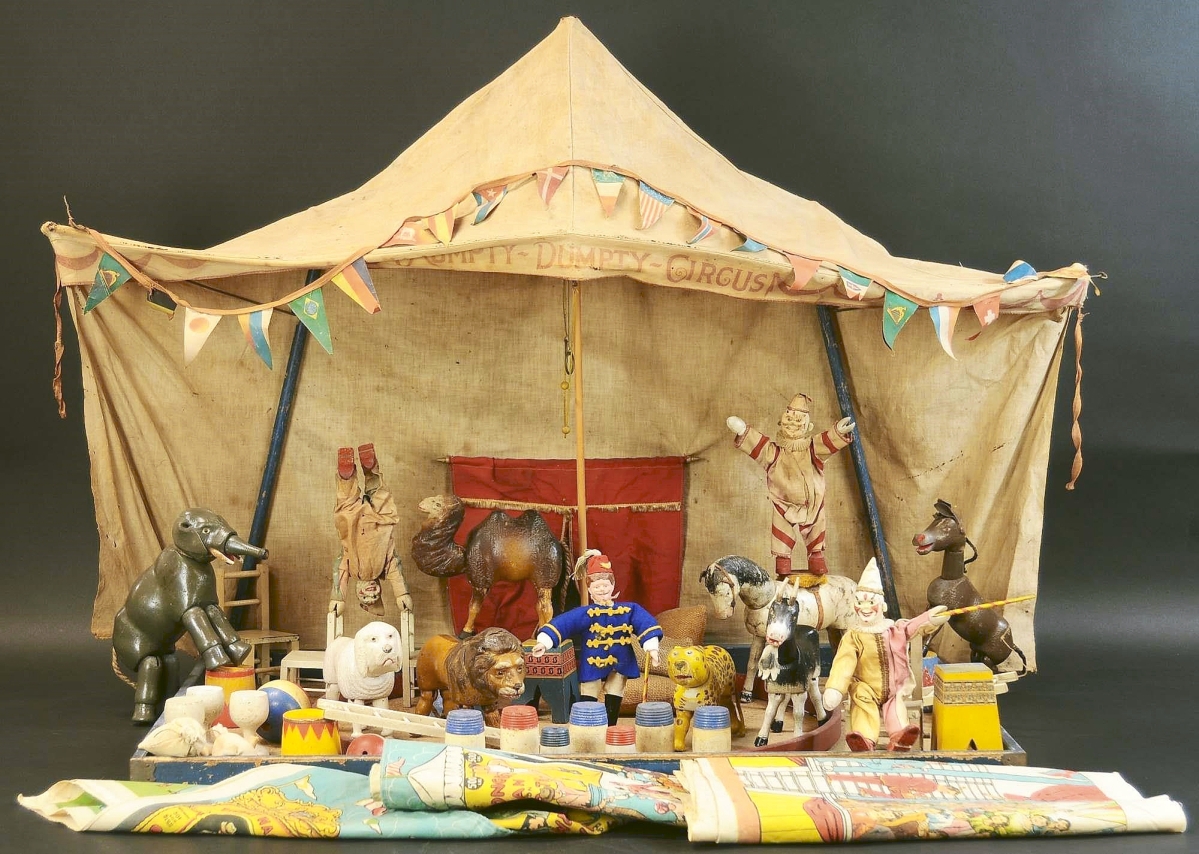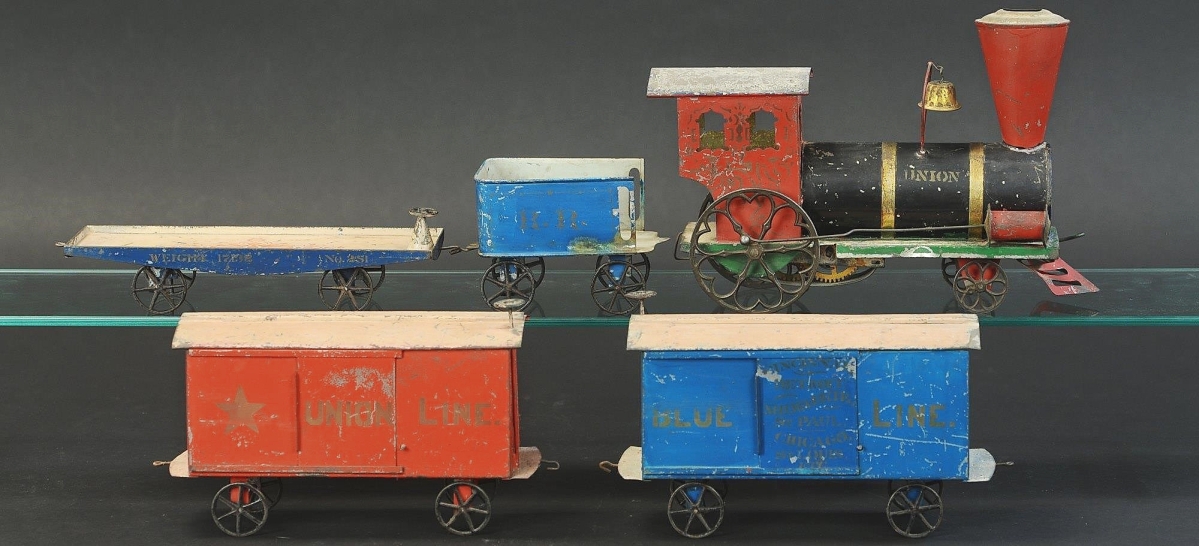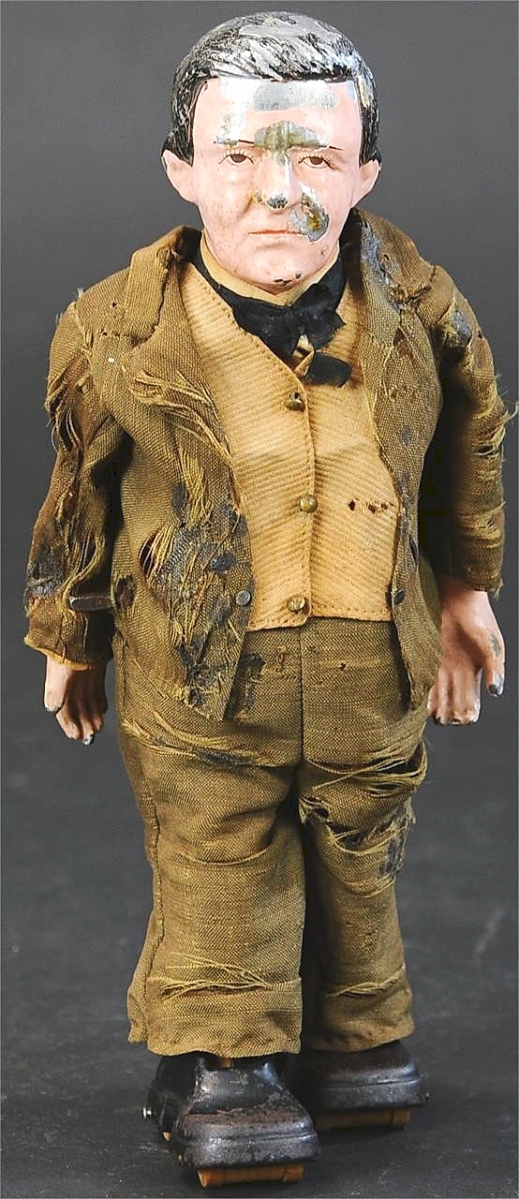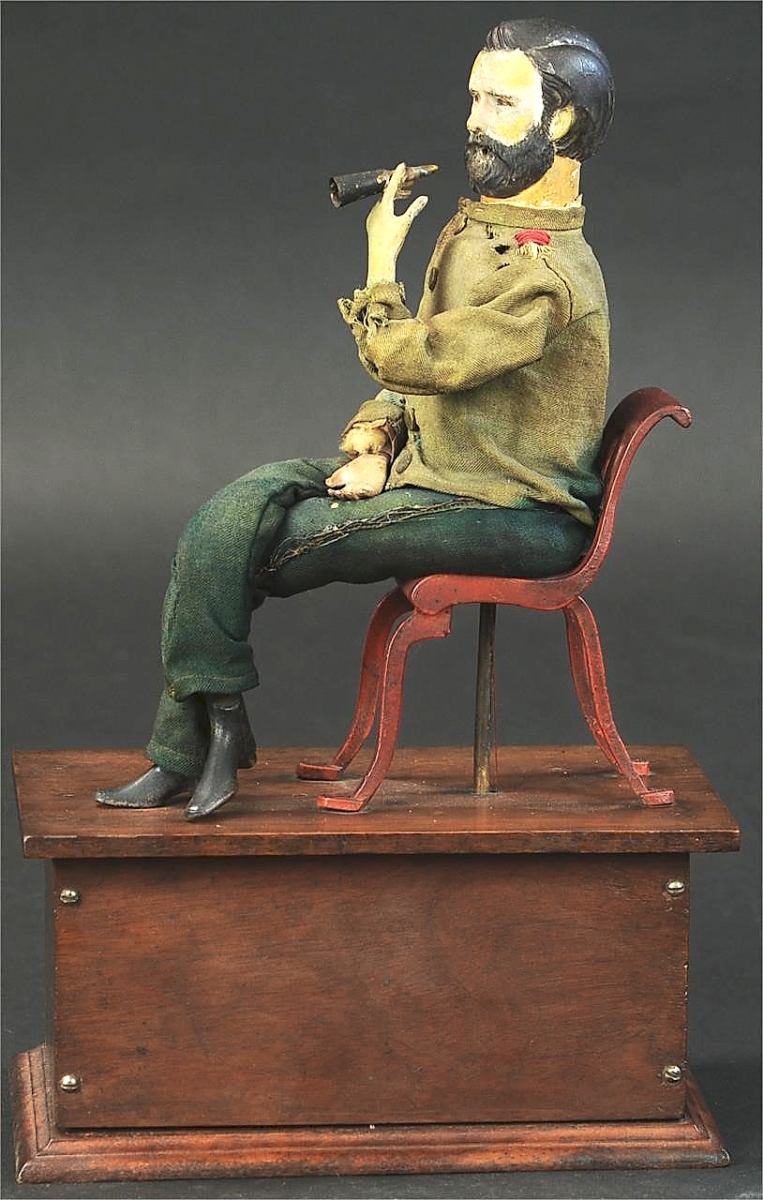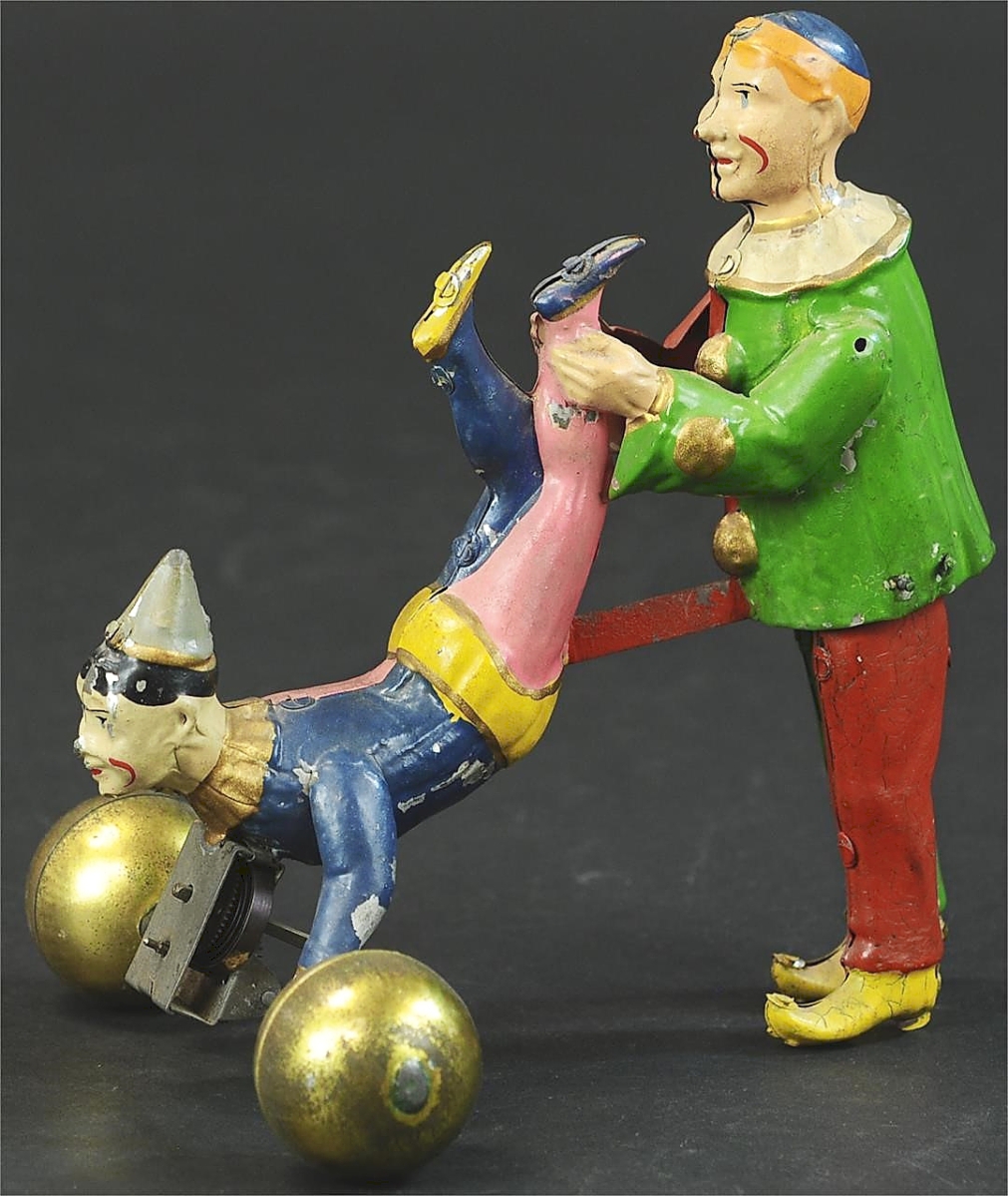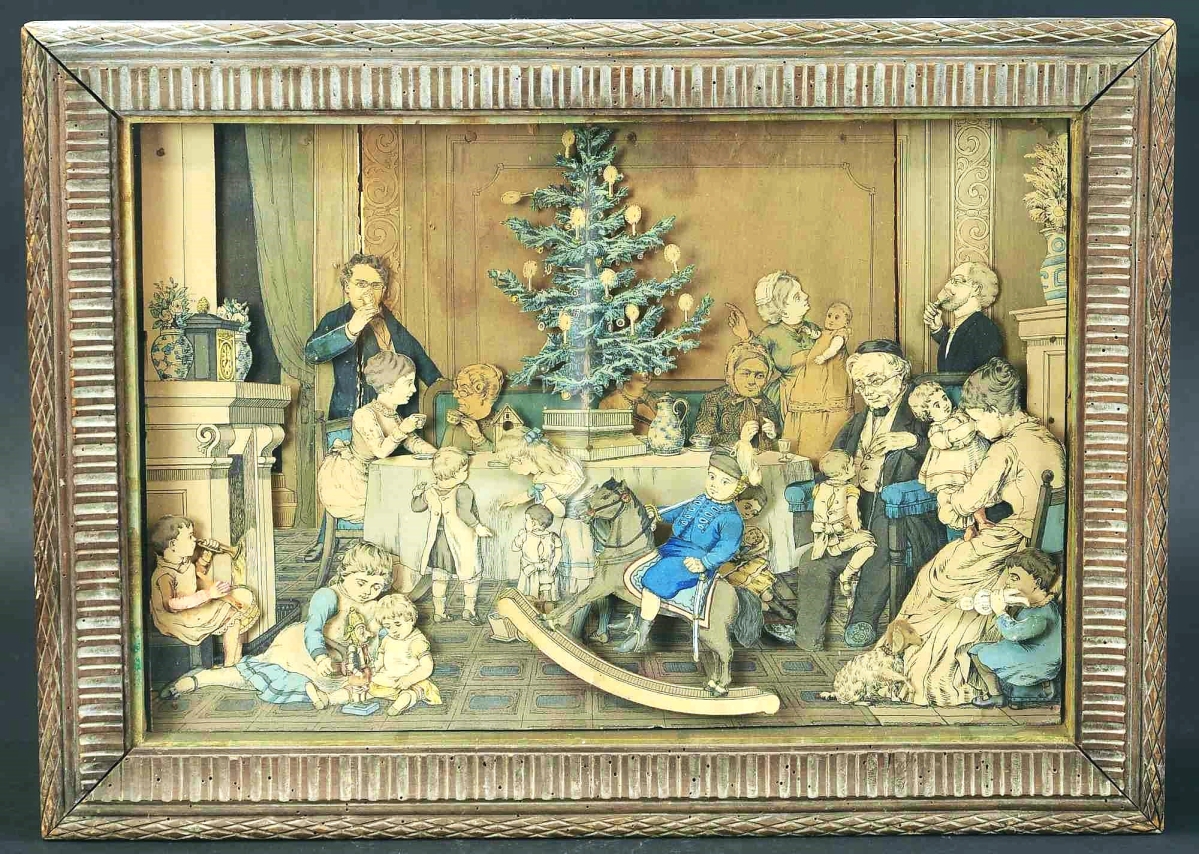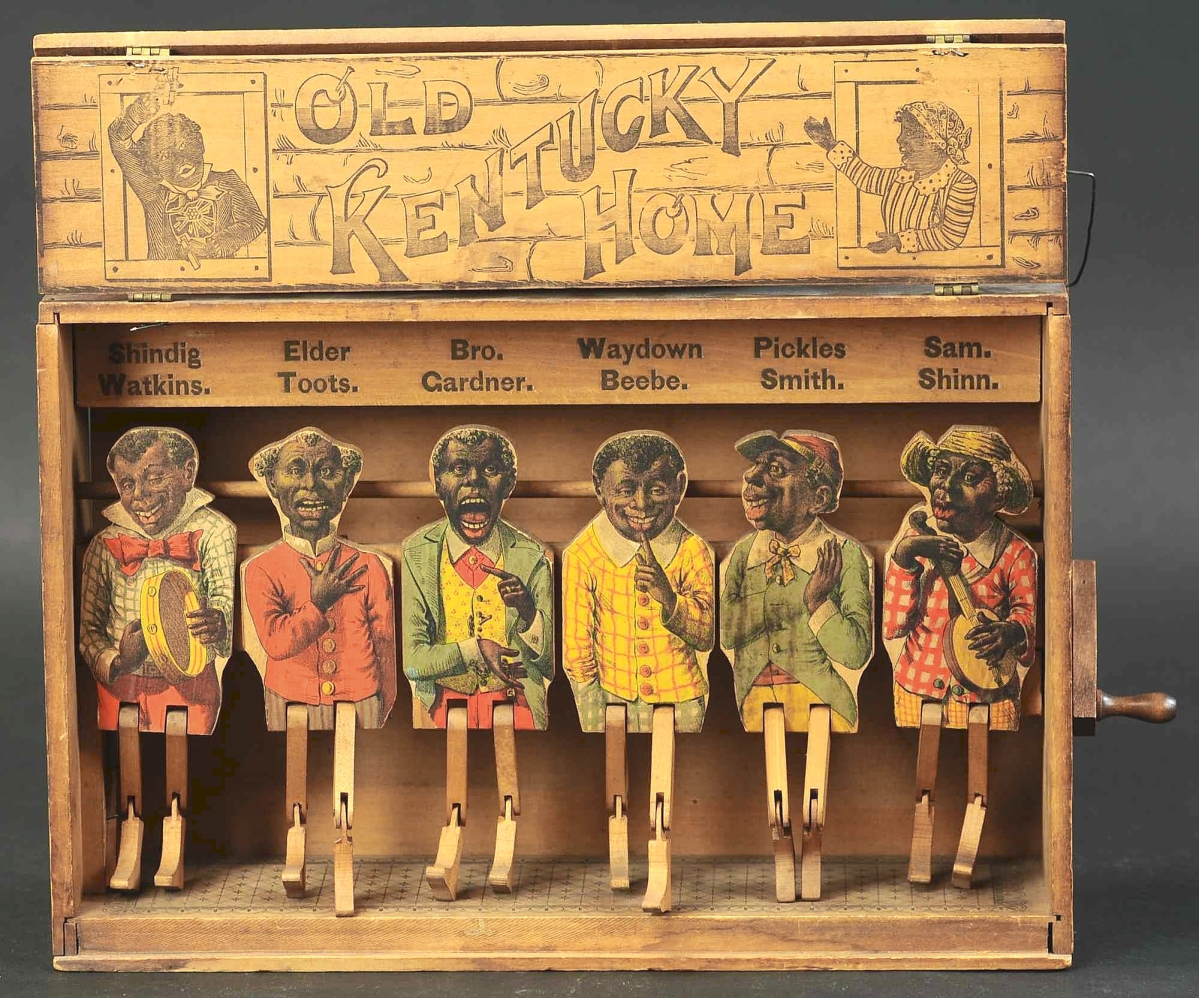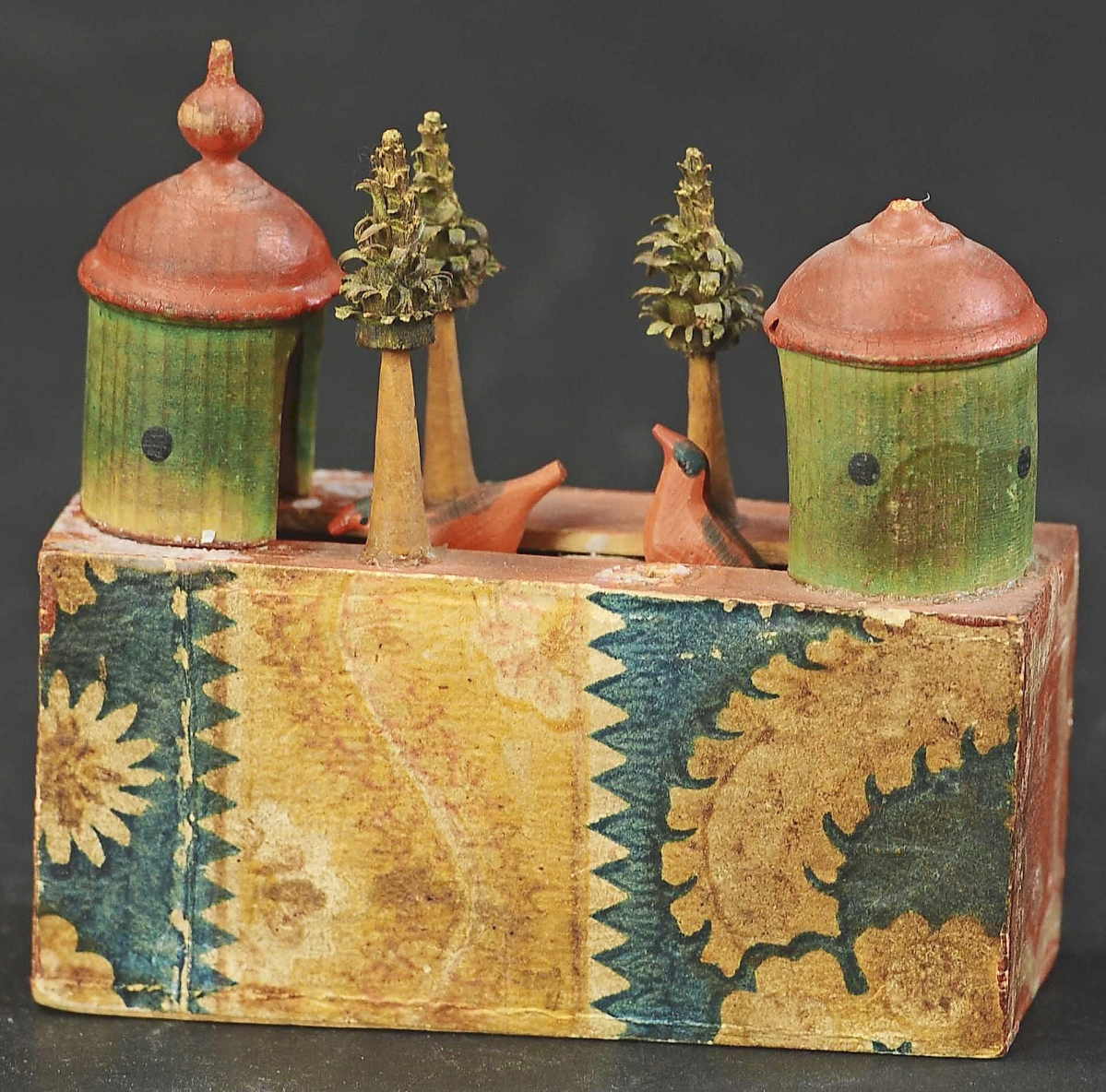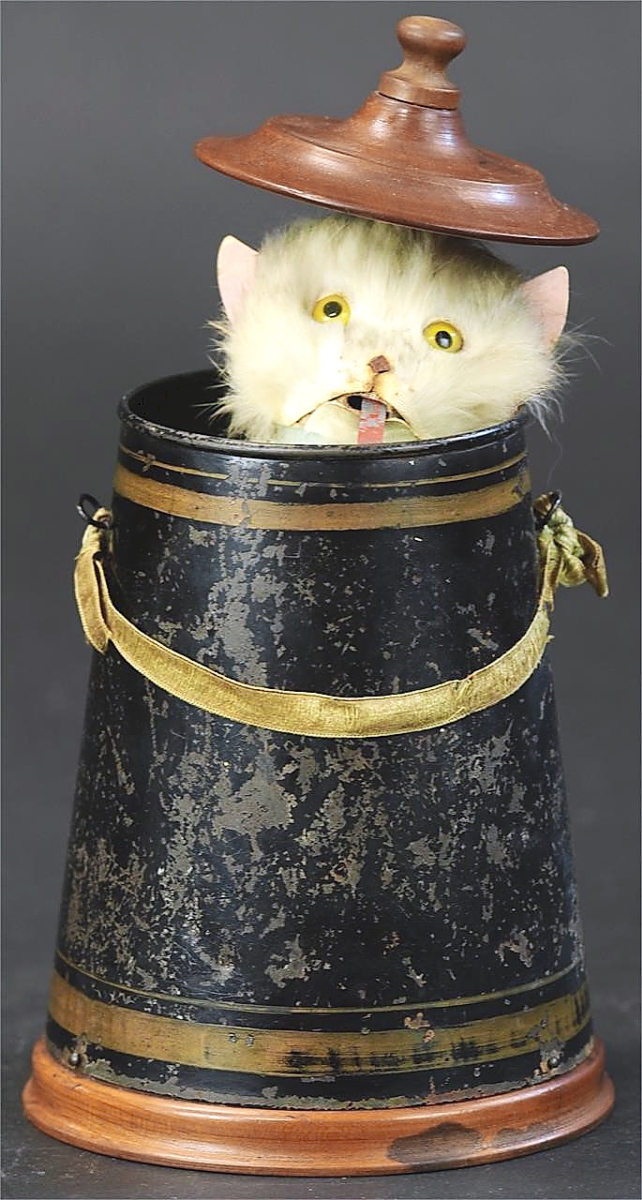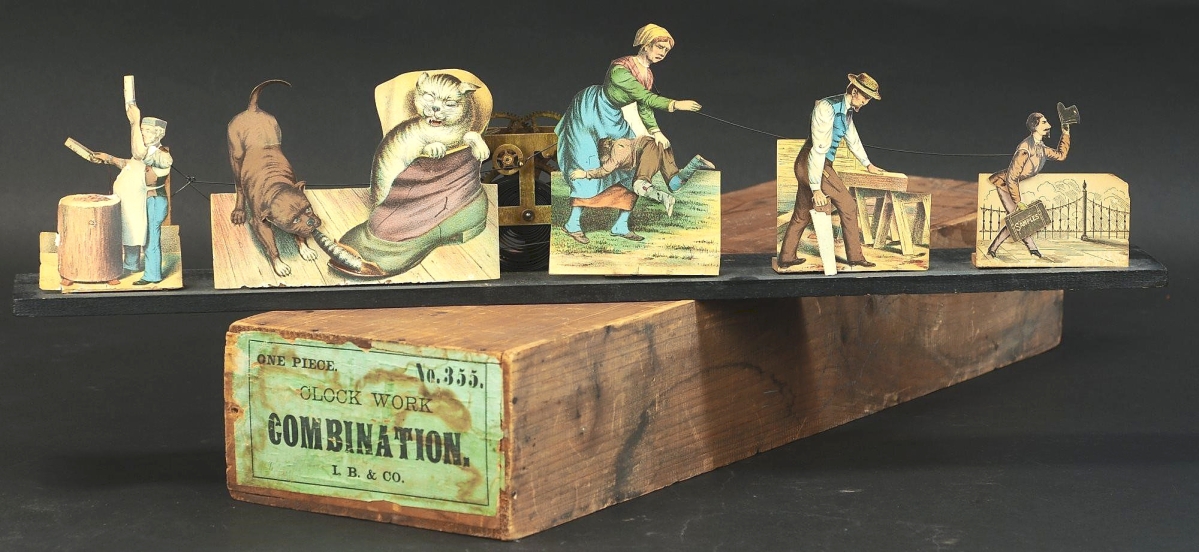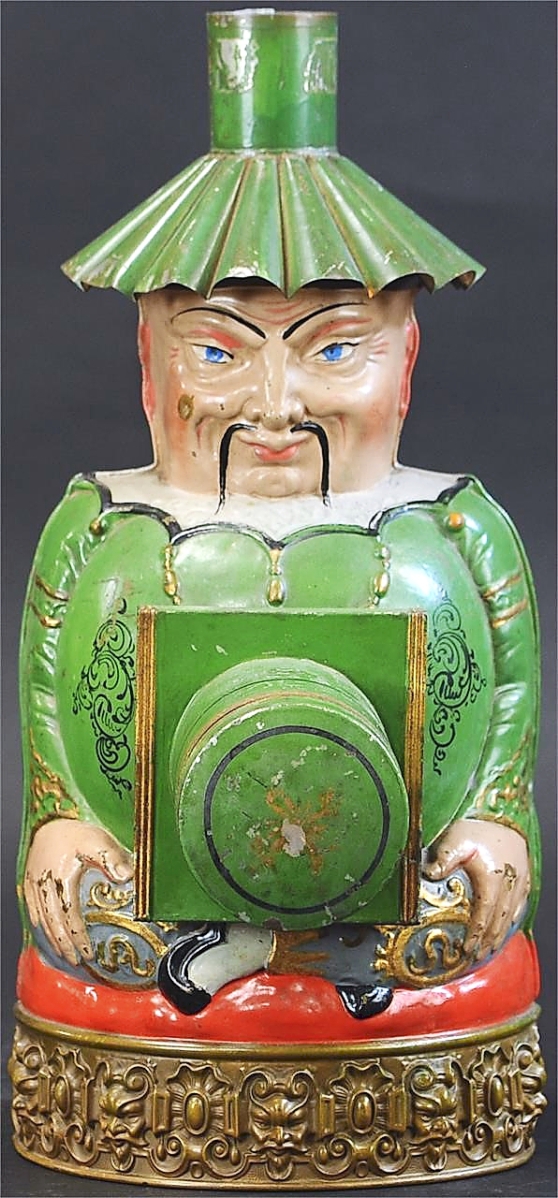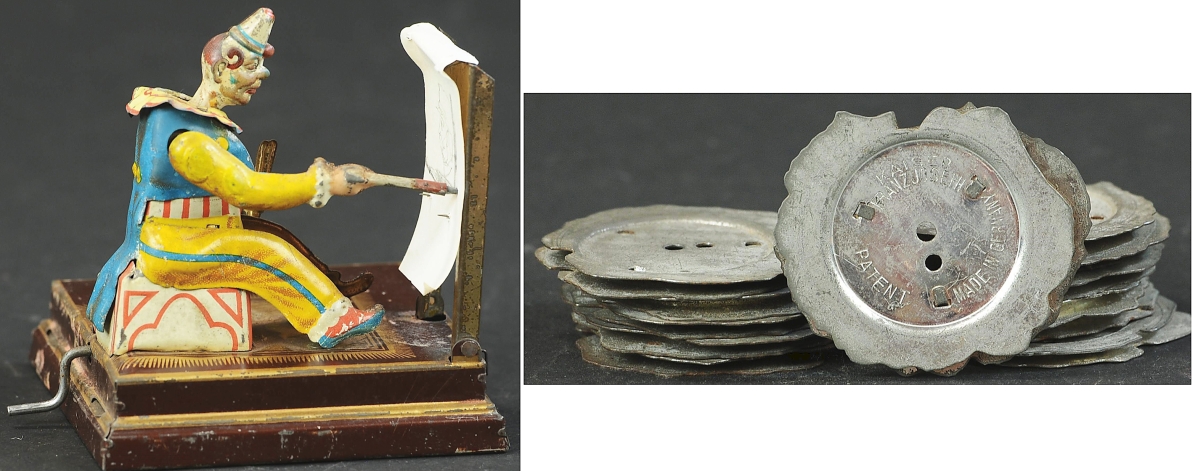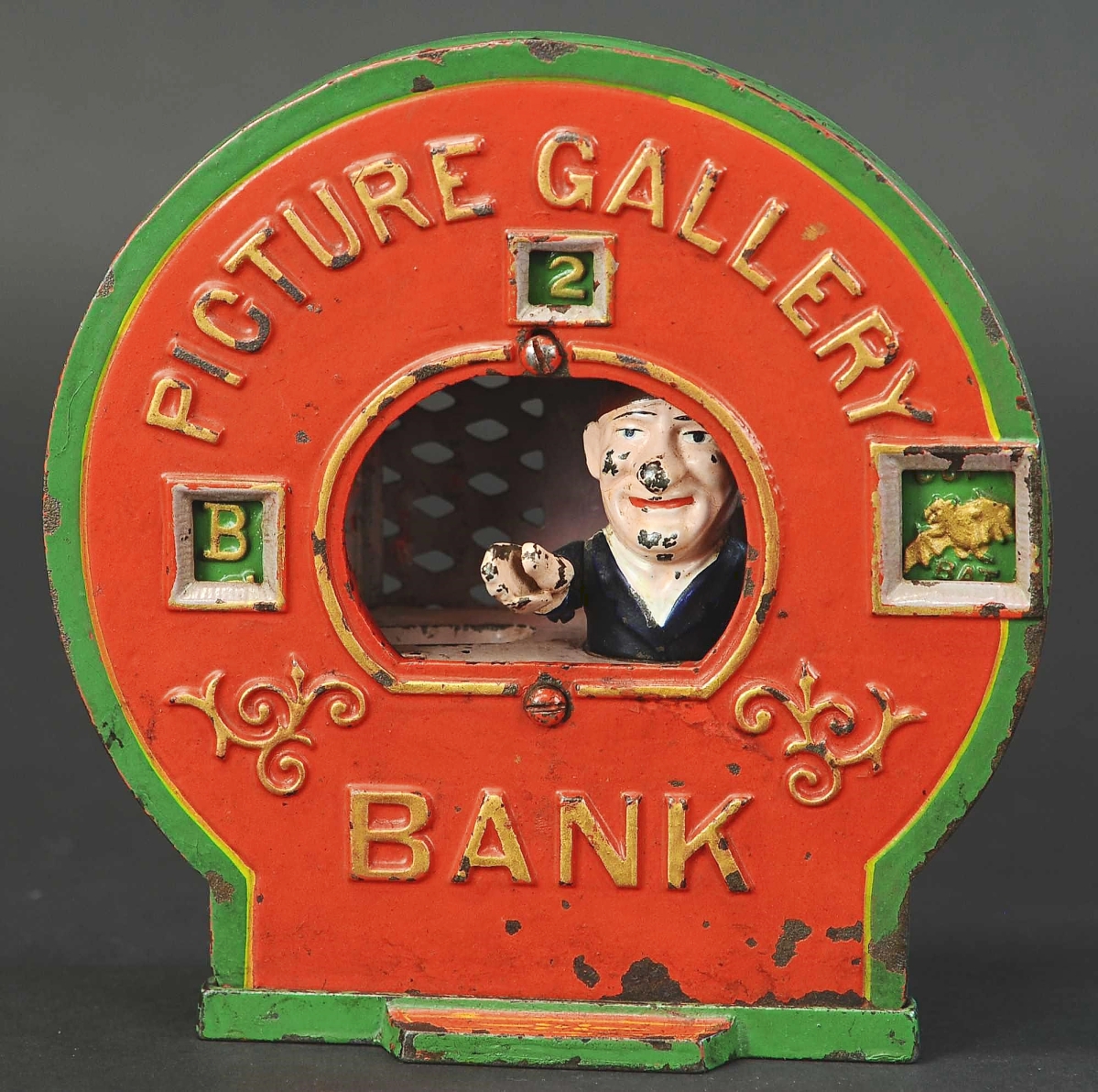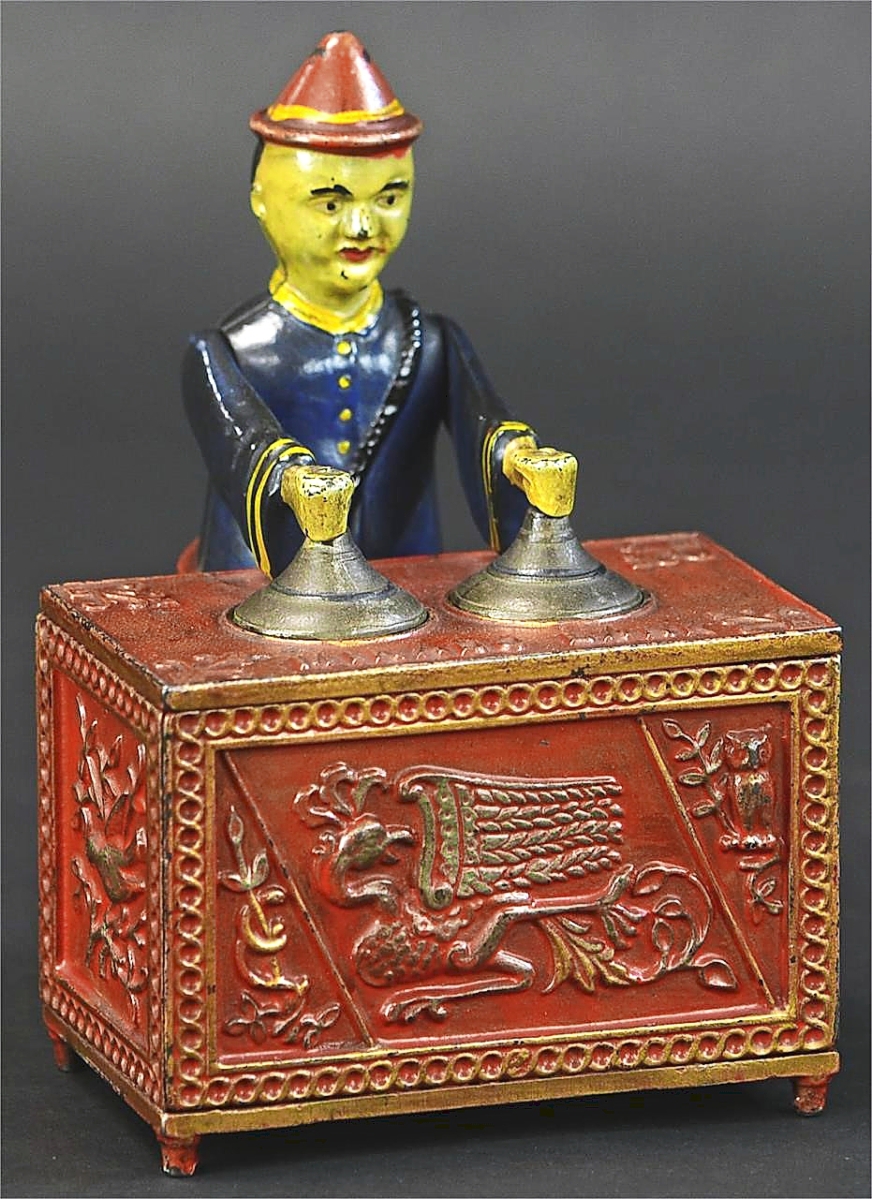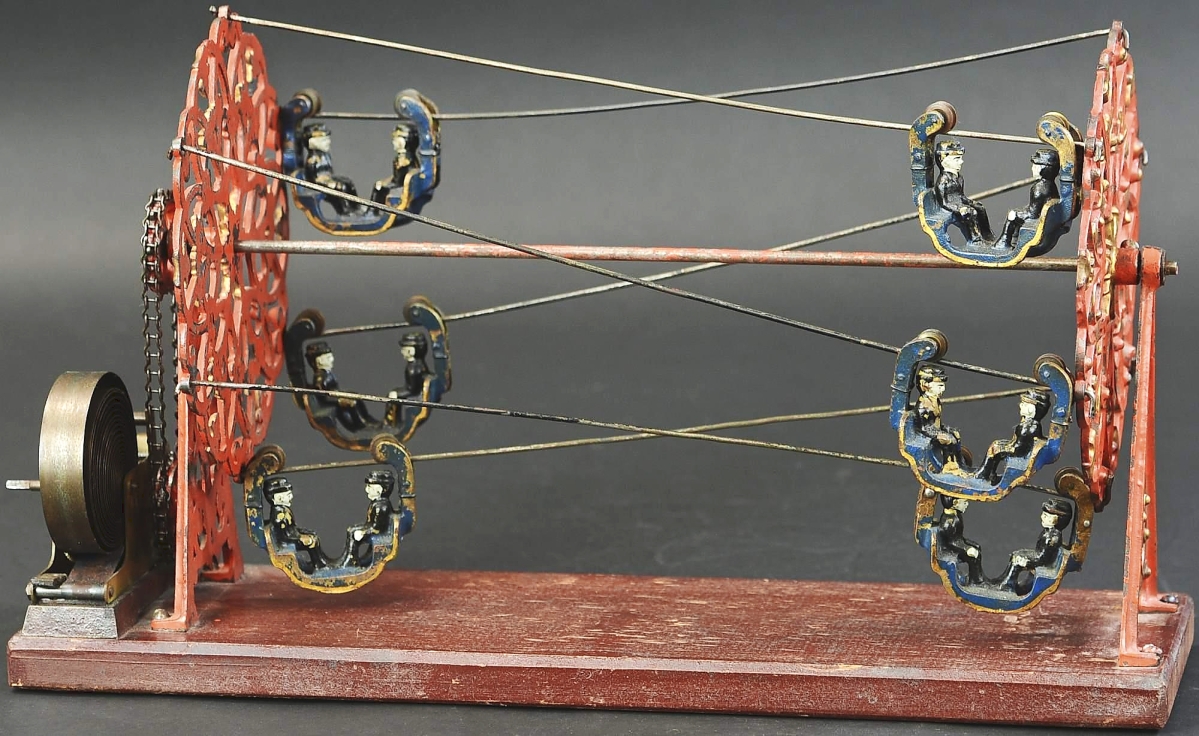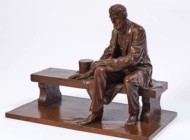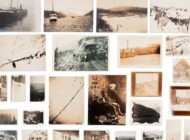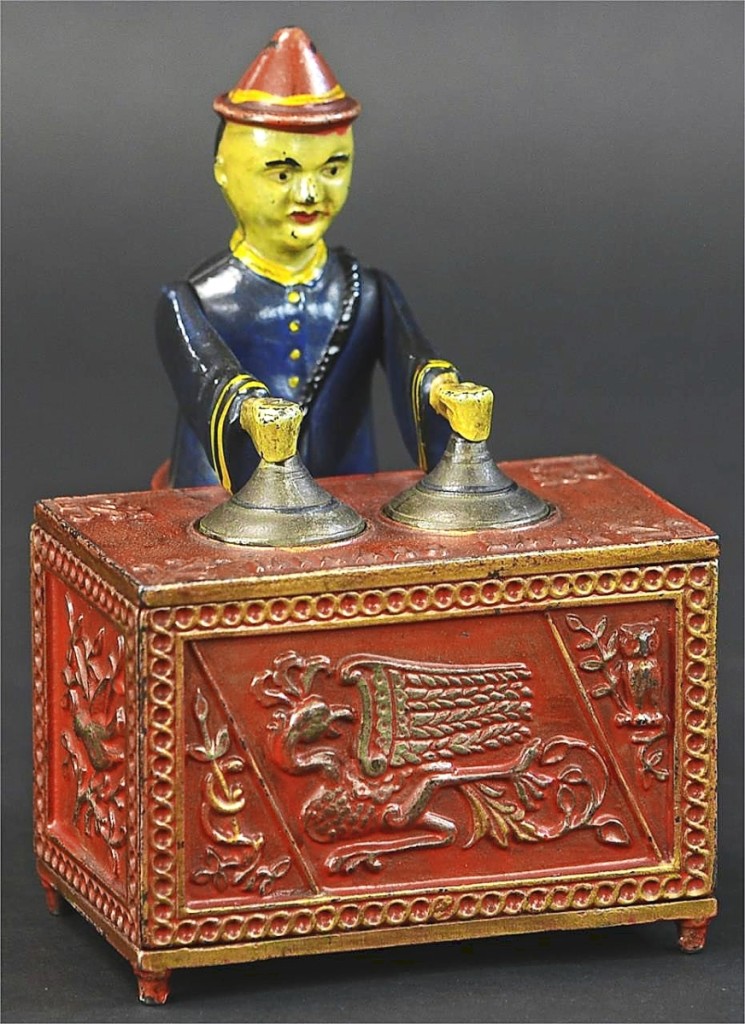
The sale was led at $288,000 by a Mikado mechanical bank, which sold to an American collector. An absentee bid came into the auction house for more than $200,000, but it was not enough to secure the coveted example. The result launches the bank into the top half dozen auction records for any mechanical bank ever sold. Kyser & Rex produced this example in the red table version and it is considered one of the best known.
Review by Greg Smith, Photos Courtesy Bertoia Auctions
VINELAND, N.J. – When we spoke with Michael Bertoia following the September 10-11 sale at Bertoia Auctions offering the second installment of the Aaron and Abby Schroeder collection, the auctioneer expressed his awe. “The whole sale blew us away,” he said. “It’s the second time the Schroeder collection surpassed our expectations.”
The September sale grossed more than $2.6 million with a 99 percent sell through rate. Add that to the total from the couple’s first sale at Bertoia – $3.1 million in March, 2021 – and comparisons start rolling in. Bertoia noted that he has only ever handled two toy collections – those of Max Berry and Donald Kaufmann – that have exceeded that $5.7 million total.
[See Time Capsule Schroeder Collection Banks Over $3 Million For Bertoia for a review of the March sale]
“Even in the industry at large, there are very few collections that have ever reached that level,” he said.
And the firm isn’t done with the Schroeder collection yet. They’ll have at least one, and possibly more, sales next year, beginning in the spring.
“Abby is very pleased with the results of the sale, with the level and amount of participation, and happy to see the items she had loved for so many years go into the arms and homes of collectors who will equally cherish them,” Bertoia said.
Aaron Schroeder wrote and produced music with many famous artists in the Twentieth Century, including 17 songs for Elvis, five of which would become number one hits. Aaron produced a catalog of more than 1,500 songs and his wife, Abby, was vice president of the music-publishing and record-production company that they would go on to sell in 1978. It wasn’t long thereafter that the Schroeders began collecting toys.
Bertoia said that his firm has been hard at work to market the brand of the Schroeder collection, which already earned renown as one of the last old time-capsule collections in existence.
“We’ve tried to demonstrate what the collection entails,” he said. “Most collections that exist are strong in a single or maybe a handful of different categories, whereas the Schroeders collected in a dozen categories and they have rare examples in each that are some of the best known.”
The sale’s top lot was a Mikado mechanical bank by Kyser & Rex, which sold to an American private buyer for $288,000, a record for the form. The Schroeders found the piece in an advertisement for an estate auction in the late 1970s or 1980s. It was advertised as a doorstop.
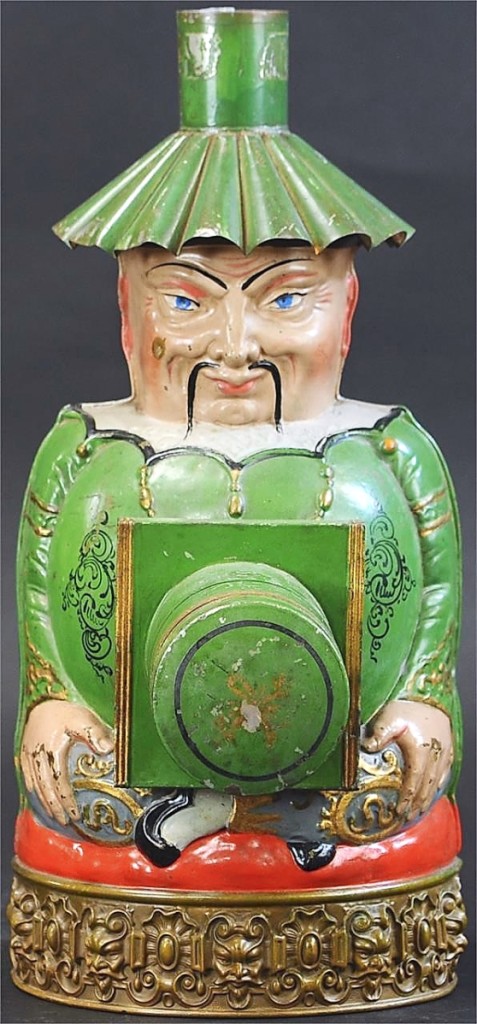
Bertoia said that bidders for this French magic lantern chased it for its aesthetic beauty and the example would go on to produce $45,600. It is variously referred to as “Chinaman” or “Buddha” and features hand painted work on a tin body with brass edged base border.
“The doorstop was not a doorstop, but was instead an extremely rare and incredible condition Mikado bank,” Bertoia said. Only another dealer in the audience recognized its significance and the Schroeders had to chase it higher than they would have liked. Cataloged in “pristine to near mint” condition, it is one of the finest examples known. On why it broke the record for a Mikado bank, Bertoia pointed to the near perfect paint on the figure’s face. Bertoia noted, “‘The money is in the face’ as Donal Markey said, but it’s a rare example in any condition. It could be another decade before another comes up.”
At $288,000, it is among the highest half dozen auction records for a mechanical bank ever sold.
Ringing in at $96,000 was a Man Kicking Watermelon mechanical bank by J&E Stevens. Circa 1888, it is one of only a handful of examples known and among the rarest of all pedestal banks. The action depicts a Black figure kicking a small watermelon into a larger watermelon. At some point, the example’s pedestal legs were replaced.
“The paint makes it a magnificent example,” Bertoia said, “But the legs are a fairly large flaw – that’s a whole replaced portion. Still, when are you going to get another?”
There were ten other cast iron mechanical banks that sold above $25,000. Taking $72,000 was a Picture Gallery by Shepard Hardware Co. Bertoia said it was among the best examples known with only a few minor chips to the paint. Others from Kyser & Rex included the Roller Skating bank, which glided to $60,000, and the Chimpanzee bank in red and blue that sold for $48,000. Resembling the style of a Kyser & Rex bank was W.S. Reed Co’s Little Red Riding Hood bank without any repairs and original paint. It sold for $33,600. J&E Stevens was further represented by a Girl Skipping Rope bank at $32,400 and three banks at $30,000 a piece: a large yellow Panorama, a Professor Pug Frog bank and a Dentist bank.
Recasts of Charles Bailey’s banks were made in the mid-Twentieth Century, according to the auction catalog. The Connecticut toy designer, who had a successful career designing for J&E Stevens, produced a run of banks on his own, though not all were produced and the spelter examples are more commonly seen. So rare are his original cast iron banks – Bertoia knew of only two – that the run of about a dozen recasts are quite valuable, even in a niche that is laser-focused on authenticity and condition. Bailey’s Wish Bone mechanical bank in pristine condition sold for $28,800.
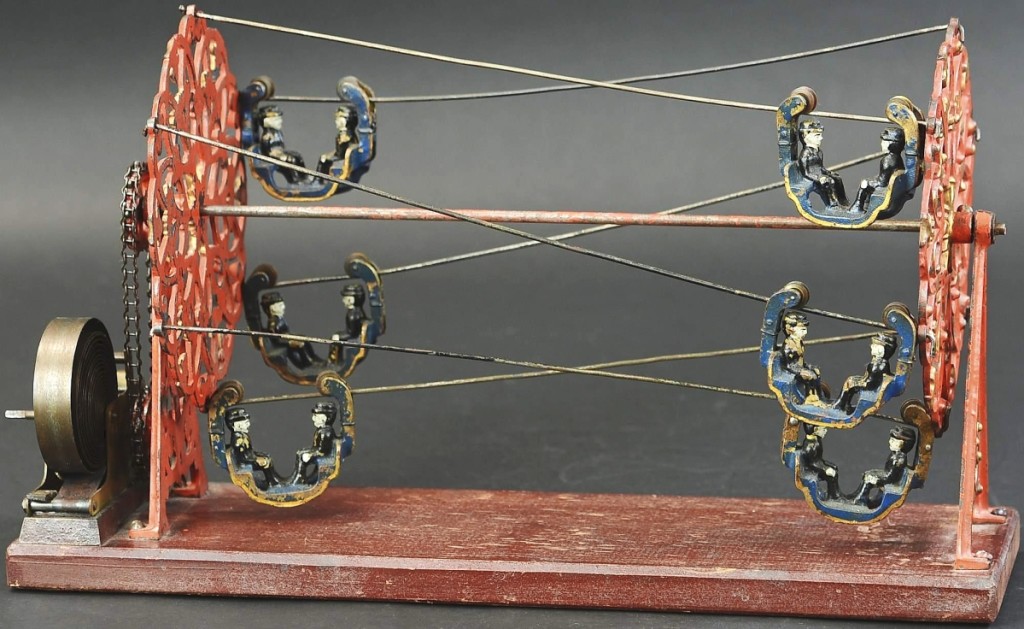
Taking $15,600 was this Hubley clockwork amusement ride toy, estimated to be one of only three known. As the ornate cast iron wheels rotate on the sides, the six gondolas glide from side to side. The Schroeders purchased it out of the Max Berry collection.
A strong selection of clockwork toys by Ives were led by a Hippodrome Chariot at $24,000. Bertoia said only a few of these forms are known and this was believed to be the best. The firm called it “arguably the most uniquely designed horse drawn vehicle that Ives produced,” with a fine clockwork chariot featuring gilt decorated cavalry officer on rampant horse and thin, pierced iron wheels. Other horse-drawn toys from the company were quite desirable, including $16,800 paid for a boxed Jubilee Trotting Course.
Abby Schroeder had a deep affection for the works of Ives.
“Ives was in business for a good run and they had very creative and clever designs for their time,” Bertoia said. “The toys oftentimes portrayed things of that time in history. Among the clockworks, the reason they are called that, as opposed to windups, is that the motors are clock spring motors. A single wind could have a toy activated for several minutes. For the child in 1890, the toy could give more than a few moments of joy.”
Abby Schroeder’s Ives collection was vast, including banks, toys, clockworks and paper. Bertoia said it was one of the more complete Ives collections he had ever seen.
Other offerings from Ives included a cast iron sledge with reindeer that is believed to be the only example known. It is in near mint condition and unused, depicting a bundled up Eskimo in a sled drawn by two reindeer. The work sold for $19,200.
There were plenty of other examples that were carried upward by rarity – the catalog noting their population in handfuls: “One of only a handful known,” or, in some cases, “The only known example.”
Outside of a book, Bertoia had never seen another Jack Tar Money Box. It came with its original wooden crate with the full label on the lid and side and sold for $26,400 above a $10,000 estimate. Place a coin into the sailor’s tray and the weight causes it to tip into the wooden box. The sailor then tips his hat to the depositor.
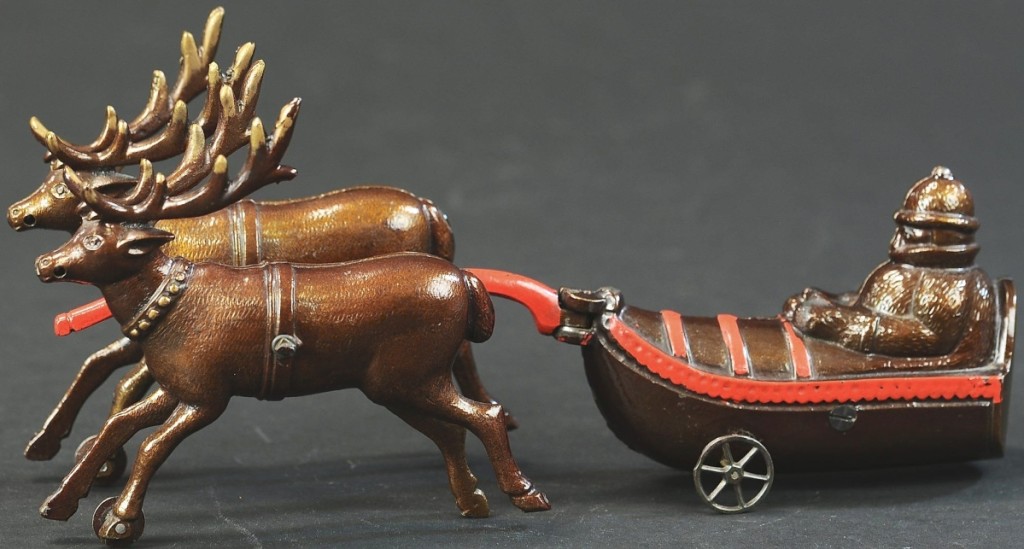
A private Pennsylvania collector snapped at the opportunity to own the only-known cast iron sledge with reindeer by Ives. The paint was immaculate and the auction house graded it in near mint condition. It brought $19,200.
The same was true on an Ives clockwork combination toy with original box. When the clockwork is wound, the paper toy panels each feature a different movement. The example sold for $3,000.
The bar was raised with Ives’ Tilden The Stateman Walker, a clockwork ambulator that was featured in Blair Whitten’s book. It’s the only example known and it sold for $5,400 with distressed clothes. Samuel Tilden was a governor of New York and the 1876 Democratic candidate for president of the United States. Tilden lost that election to Rutherford B. Hayes, becoming only the second candidate at the time to win the popular vote but lose due to the Electoral College. It has now happened five times, most recently in 2016 with Hillary Clinton.
Althof Bergmann’s Fire Patrol Wagon, a hand-painted tin toy featuring two horses pulling a fire wagon with five figures in it, is the only known complete example and 100 percent authentic. It brought $31,200 on a $7,000 high estimate.
Gracing the front of the catalog was a Chinaman Magic Lantern, a French example circa 1870, that sold for $45,600 on a $10,000 high estimate. The hand painted example with a brass edged border stands 16½ inches and is among the most desirable of all magic lanterns.
Bertoia said the lantern was appealing on an aesthetic level.
“That’s a perfect example of form and color, it’s more of a tin sculpture. The size was large, it had a whimsical look. Abby had just the one lantern, they bought it as an object of beauty. The audience was just the same, there were lantern and optical interests, but that piece spoke to a lot of people. You don’t have to own a lantern to appreciate how fine the quality of it was.”
Bertoia described the in-gallery attendance as “medium,” noting that many buyers preferred to bid over the phone or online.
American buyers were strong on the first day, which centered on American cast iron, with international participation coming through on the second day for the tin toys.
“The bidding was a little slower, but for the right reasons,” Bertoia said. “The amount of bidding on nearly every lot was immense.”
All prices reported include buyer’s premium.
Bertoia Auctions will offer Part II of the Paul Cole collection October 15-16.
For additional information, www.bertoiaauctions.com or 856-692-1881.

